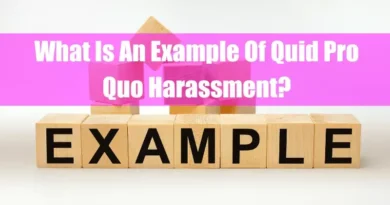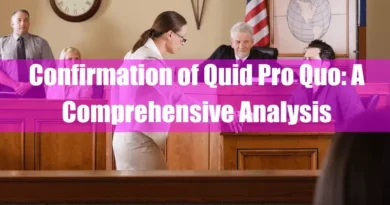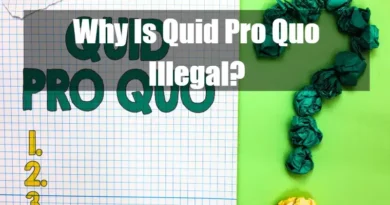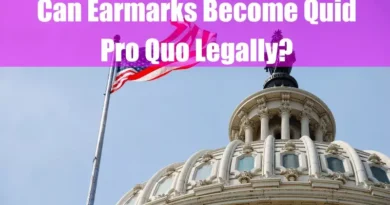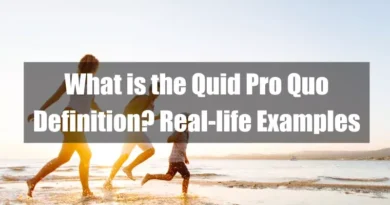Latin phrase quid pro quo:
- Quid means “something” (often interpreted as “this”).
- Pro means “for.”
- Quo means “something else” (“that”).
Thus, the phrase “Quid Pro Quo” means “something for something” or “this for that.” For example, in daily transactions, if you go to a shop and buy something at its regular price, that’s a straightforward quid pro quo: your payment is the quid, and the item is the quo.
In another case, if you think the price is too high and ask for a discount, and the shopkeeper agrees, you both come to a new agreement. Your payment (after the discount) is still the quid, and the item is the quo. In both examples, a mutually agreed exchange takes place, which constitutes quid pro quo.
Here are key takeaways from the article:
- Quid pro quo is a Latin term meaning “something for something.” It refers to an exchange where one party provides something of value in return for a favor, service, or another item of mutually agreed upon value.
- In business, quid pro quo can simply refer to legitimate reciprocal agreements where both parties agree to trade goods or services of mutual benefit. The legality depends on whether the exchange is transparent and lawful or involves coercion or illegal intentions, such as influencing official actions or decisions through personal gains.
- In legal and political contexts, quid pro quo can sometimes involve unethical or illegal activities, such as bribery or coercion. For instance, in bribery cases, a person may offer money or benefits to a public official in exchange for specific actions or decisions. However, not all quid pro quo arrangements are illegal; it depends on the nature of the exchange and whether it violates laws governing ethics and transparency.
- Similarly, in employment, quid pro quo harassment happens when a job benefit (like a promotion) is conditioned on submitting to unwelcome demands, such as sexual favors.
Let’s discuss in detail:
Understanding Quid Pro Quo
Quid pro quo, a Latin phrase meaning “something for something,” represents the basic principle of an exchange in which a favor, service, or benefit is given in return for something of value. In its simplest form, it refers to mutual agreements where each party provides something in exchange for the other’s contribution. This can range from everyday transactions, like trading goods, to more complex legal or professional contexts.
In various fields, such as law, politics, business, and the workplace, the term has specific implications, especially when examining the fairness or legality of the exchange.
Legal Definitions and Examples

Quid pro quo is deeply rooted in contract law and business practices. In legal terms, the phrase signifies a reciprocal transaction in which one party provides a service, goods, or favor, and the other party provides something of equal, comparable, or mutually agreed upon value.
In contract law, this “consideration” is essential for validating agreements. While consideration—often likened to quid pro quo—is typically essential for forming a binding contract, not all contracts are void without it. In some cases, such as contracts under seal or situations involving promissory estoppel, a contract may still be enforceable even if there is no direct value exchange.
For example, a business might offer discounts to a loyal customer in exchange for that customer purchasing in bulk. Similarly, an individual could agree to a service in return for a favor, like a neighbor fixing your car in exchange for pet-sitting while they are on vacation. These instances are clear-cut examples of quid pro quo in action, where both parties stand to benefit from the exchange.
Quid Pro Quo in the Workplace

In the employment sector, quid pro quo often arises in the context of workplace harassment. Specifically, quid pro quo sexual harassment occurs when a supervisor or employer offers benefits, such as promotions, raises, or job security, in exchange for sexual favors. The key here is that an important employment decision hinges on whether the employee complies with the request. This form of harassment is illegal under U.S. labor laws and is strictly prohibited under Title VII of the Civil Rights Act.
For instance, if a manager promises a subordinate a promotion in exchange for sexual favors, this constitutes quid pro quo harassment. On the other hand, it can also involve a threat, where refusing to engage in sexual conduct results in negative consequences, such as demotion or loss of employment.
In broader terms, the concept can apply to any coercive exchange between individuals with unequal power in the workplace. The key element of quid pro quo harassment is that the victim’s submission or refusal directly impacts their employment benefits.
Quid Pro Quo in Politics

Political quid pro quo is often linked to corruption or perceived unethical conduct. It occurs when politicians exchange favors, such as policy support or government contracts, in return for contributions or personal benefits.
This concept is especially scrutinized in U.S. politics, particularly in campaign finance. For example, while a corporation may donate to a politician’s campaign with the hope of influencing policy, any explicit agreement to pass favorable legislation in return for such donations would be illegal and considered bribery.
Although not all such exchanges are unlawful, they can raise suspicions of corruption or bribery. Large campaign donations, in particular, may blur the line between legal contributions and illicit quid pro quo arrangements, leading to public skepticism and potential investigations.
Quid Pro Quo in Business

In business dealings, quid pro quo transactions are common and often necessary. These exchanges are usually lawful and form the backbone of contractual agreements. However, issues arise when the exchange involves unethical or illegal activities, such as insider trading or bribery. For example, an executive providing confidential information about the company in exchange for personal financial gain is considered illegal and unethical quid pro quo.
On a smaller scale, quid pro quo in business might involve exchanging favors, like partnering on projects, in exchange for future business advantages. While such transactions are not inherently illegal, they become problematic if they involve coercion, bribery, or deception.
Ethical Considerations
While the concept of quid pro quo is neutral in itself, ethical considerations arise depending on the context. In many cases, the problem stems not from the exchange itself but from its impact or the power imbalance between the parties involved. These exchanges can lead to unfair advantages or corrupt practices if not properly regulated or disclosed in areas like politics, law, and business.
For example, when one party holds significantly more power (such as a supervisor over an employee or a politician over a corporate donor), the quid pro quo exchange can become coercive. Similarly, an undisclosed exchange of favors can result in conflicts of interest, undermining public trust or leading to legal consequences.
To mitigate these issues, establishing clear guidelines, enforcing transparency, and promoting accountability in quid pro quo exchanges can help prevent power imbalances, coercion, and conflicts of interest, particularly in sensitive fields like politics, law, and business.
Conclusion
Quid pro quo remains an essential concept in many fields, from law and business to politics and workplace dynamics. It represents the idea of fair exchange but also highlights the ethical and legal issues that can arise when such exchanges become imbalanced or coercive. Whether in contract law, workplace harassment, or political dealings, the principle of “something for something” underpins much of our understanding of fair and reciprocal exchanges.
Careful attention must be paid to the power dynamics and legality of the exchange to prevent unethical or illegal outcomes.




